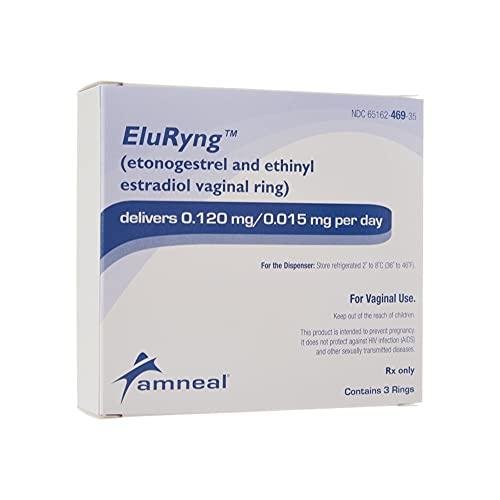Ethinyl estradiol/etonogestrel Interactions
There are 502 drugs known to interact with ethinyl estradiol/etonogestrel, along with 21 disease interactions, and 7 alcohol/food interactions. Of the total drug interactions, 78 are major, 375 are moderate, and 49 are minor.
- View all 502 medications that may interact with ethinyl estradiol/etonogestrel
- View ethinyl estradiol/etonogestrel alcohol/food interactions (7)
- View ethinyl estradiol/etonogestrel disease interactions (21)
Most frequently checked interactions
View interaction reports for ethinyl estradiol / etonogestrel and the medicines listed below.
- Actos (pioglitazone)
- Allegra (fexofenadine)
- Bactrim (sulfamethoxazole / trimethoprim)
- Botox (onabotulinumtoxinA)
- BuSpar (buspirone)
- Contrave (bupropion / naltrexone)
- Crestor (rosuvastatin)
- Cymbalta (duloxetine)
- Digestive Advantage Daily Probiotic (bacillus coagulans / calcium carbonate)
- Effexor XR (venlafaxine)
- Ethyl Alcohol (ethanol)
- Flexeril (cyclobenzaprine)
- Flonase (fluticasone nasal)
- Lantus (insulin glargine)
- Lasix (furosemide)
- Lexapro (escitalopram)
- Linzess (linaclotide)
- Lipitor (atorvastatin)
- Lithium Carbonate ER (lithium)
- Lunesta (eszopiclone)
- Lyrica (pregabalin)
- Prilosec (omeprazole)
- Ritalin (methylphenidate)
- Synthroid (levothyroxine)
- Tramadol Hydrochloride ER (tramadol)
- Vitamin B12 (cyanocobalamin)
- Vitamin D3 (cholecalciferol)
- Vyvanse (lisdexamfetamine)
- Zoloft (sertraline)
- Zyrtec (cetirizine)
Ethinyl estradiol/etonogestrel alcohol/food interactions
There are 7 alcohol/food interactions with ethinyl estradiol / etonogestrel.
Ethinyl estradiol/etonogestrel disease interactions
There are 21 disease interactions with ethinyl estradiol / etonogestrel which include:
- smoking
- abnormal genital bleeding
- abnormal vaginal bleeding
- carcinomas (estrogenic)
- hypercalcemia in breast cancer
- hypertension
- thromboembolism/cardiovascular
- hepatic neoplasms
- breast malignancy
- liver disease
- thromboembolism
- angioedema
- gallbladder disease
- hyperlipidemia
- liver disease
- melasma
- depression
- fluid retention
- glucose intolerance
- thyroid function tests
- gallbladder disease
More about ethinyl estradiol / etonogestrel
- ethinyl estradiol/etonogestrel consumer information
- Compare alternatives
- Pricing & coupons
- Reviews (1,402)
- Side effects
- Dosage information
- During pregnancy
- Drug class: contraceptives
- En español
Related treatment guides
Drug Interaction Classification
| Highly clinically significant. Avoid combinations; the risk of the interaction outweighs the benefit. | |
| Moderately clinically significant. Usually avoid combinations; use it only under special circumstances. | |
| Minimally clinically significant. Minimize risk; assess risk and consider an alternative drug, take steps to circumvent the interaction risk and/or institute a monitoring plan. | |
| No interaction information available. |
See also:
Further information
Always consult your healthcare provider to ensure the information displayed on this page applies to your personal circumstances.


